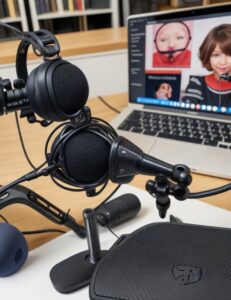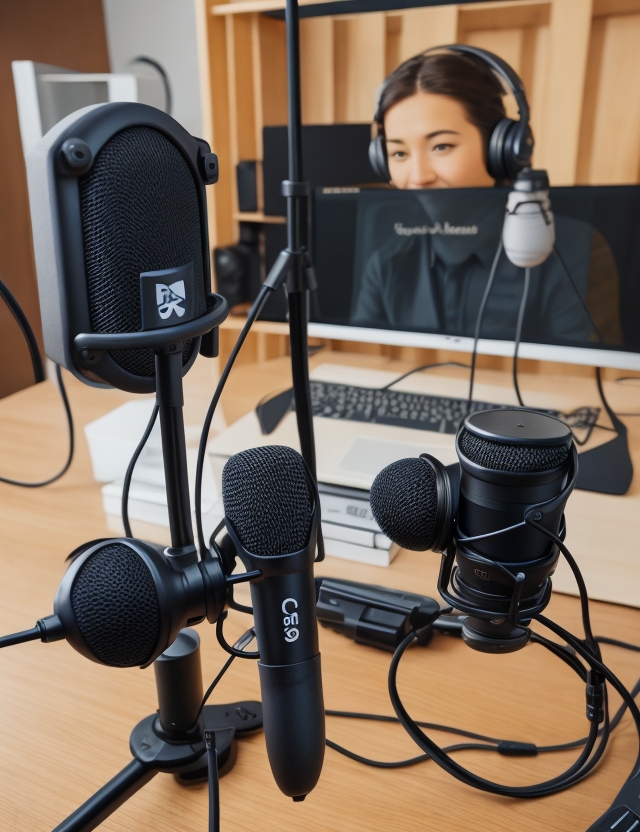How to Start a Podcast with Anchor: Your Easy Guide
So, you’ve got something to say, and you’re thinking about starting a podcast. Maybe you’ve got ideas bouncing around in your head, or you’re just itching to share your passions with the world. Whatever the reason, you’ve come to the right place. Starting a podcast might sound daunting, but with Anchor, it’s as easy as pie. Anchor makes podcasting so simple, that you’ll wonder why you didn’t start sooner. Ready to dive in? Let’s get started.
1. What Is Anchor and Why Should You Use It?
Anchor is a free podcasting platform that does everything everything for you. It’s like having your own personal podcast producer without the hefty price tag. Whether you’re a total newbie or a seasoned pro, Anchor has all the tools you need to create, distribute, and monetize your podcast. And the best part? It’s all on your phone or computer, meaning you can create content wherever you are.
Here’s why Anchor is a game-changer:
- User-Friendly Interface: Even if you’re not tech-savvy, you’ll find Anchor super easy to navigate. No complicated setups or confusing processes—just straightforward steps that get you recording in no time.
- Built-In Editing Tools: You don’t need fancy software to edit your episodes. Anchor’s editing tools are perfect for trimming, cutting, and adding music or sound effects.
- One-Click Distribution: Anchor distributes your podcast to all major platforms like Spotify, Apple Podcasts, and Google Podcasts with just one click. No need to manually submit your feed to multiple platforms—Anchor does it for you.
- Monetization Options: Want to make money from your podcast? Anchor lets you add sponsorships and listener support right from the start, so you can start earning as you grow your audience.
Now that you know why Anchor is the go-to platform for podcasters, let’s walk through how to get your show up and running.
2. Step 1: Sign Up and Set Up Your Profile
First things first—you need to create an account on Anchor. Head over to Anchor. fm or download the Anchor app from the App Store or Google Play. Sign up using your email, Google account, or Apple ID. Once you’re in, it’s time to set up your profile.
Your podcast profile is like your show’s business card. It’s the first thing potential listeners will see, so make it count. Here’s what you need to do:
- Choose a Name: Pick a name that reflects your podcast’s theme or niche. Keep it catchy and memorable, but also make sure it’s easy to spell and search for.
- Write a Description: Your podcast description should be short, sweet, and to the point. Summarize what your show is about and what listeners can expect. Think of it as an elevator pitch—keep it under 150 words.
- Add Cover Art: Your cover art is the visual representation of your podcast. Use a high-quality image that stands out in the podcast directories. You can create your own using tools like Canva, or hire a designer if you want something more professional.
- Set Up Your Anchor URL: Anchor gives you a unique URL for your podcast (e.g., anchor.fm/your-podcast-name). This is where people can find all your episodes, so make sure it’s easy to remember.

3. Step 2: Plan Your Content
Before you hit record, take some time to plan your content. A little preparation goes a long way in creating a podcast that people want to listen to. Here’s how to get started:
- Choose a Niche: What’s your podcast going to be about? Narrowing down your niche helps attract a specific audience. Whether it’s true crime, tech news, or personal finance, pick a topic you’re passionate about and stick to it.
- Outline Your Episodes: Decide on your podcast’s format and structure. Will it be interview-based, a solo show, or a mix of both? Create an outline for your first few episodes, including key points you want to cover.
- Set a Schedule: Consistency is key in podcasting. Whether you’re releasing weekly, bi-weekly, or monthly episodes, stick to a schedule so your listeners know when to tune in.
- Prepare a Script or Bullet Points: While you don’t need to script every word, having an outline or bullet points will keep you on track and ensure you cover all your topics.
4. Step 3: Record Your First Episode
Now, the fun part—recording! With Anchor, you can record directly from your phone, tablet, or computer, making it super convenient. Here’s how to do it:
- Use the Anchor App or Web Dashboard: If you’re on your phone, open the Anchor app and tap the big red “Record” button. If you’re on your computer, log in to Anchor. fm and click on “New Episode” to start recording.
- Check Your Mic and Environment: While you don’t need fancy equipment to start, a good microphone can make a difference. If you’re using your phone, try to record in a quiet space to minimize background noise. Consider investing in a basic USB microphone for better sound quality.
- Start Recording: Hit the record button and start talking! Don’t worry if you make mistakes—you can edit them out later. Try to speak clearly and at a steady pace.
- Add Background Music or Sound Effects: Anchor lets you add background music or sound effects to your episode. Just tap “Add Background Music” after recording, and choose from Anchor’s free music library.
- Save and Name Your Episode: Once you’re done recording, save your episode and give it a name. Make sure the title is catchy and descriptive, so potential listeners know what the episode is about.

5. Step 4: Edit Your Episode
After recording, it’s time to polish your episode with Anchor’s built-in editing tools. You don’t need to be an audio engineer to make your podcast sound great. Here’s how to do it:
- Trim and Cut: Use the trimming tool to cut out any awkward pauses, mistakes, or unnecessary parts. Drag the handles to select the section you want to trim, and hit “Save” when you’re done.
- Split and Rearrange: If you want to move parts of your recording around, use the split tool to divide your episode into segments. You can then drag and drop these segments to rearrange them as needed.
- Add Transitions: Smooth out your episode by adding transitions between segments. Anchor offers a variety of free transition sounds that you can insert with a single tap.
- Preview Your Episode: Before publishing, listen to your edited episode to make sure everything flows smoothly. Make any final tweaks, and you’re ready to go!
6. Step 5: Publish and Distribute
You’ve recorded, edited, and polished your first episode—now it’s time to share it with the world! Anchor makes publishing and distribution a breeze. Here’s what you need to do:
- Write Your Episode Description: Craft a compelling description for your episode. Include a summary of what listeners can expect, along with any relevant links or shout-outs.
- Add Episode Details: Fill in the episode title, season, and episode number (if applicable), and choose the publish date. You can either publish it immediately or schedule it for a future date.
- Select a Category and Tags: Choose a category that best fits your podcast, such as “Technology” or “Lifestyle.” Add relevant tags to help listeners find your show.
- Hit Publish: Once you’re happy with all the details, hit the “Publish” button. Anchor will automatically distribute your episode to all major podcast platforms, including Spotify, Apple Podcasts, and more.
7. Step 6: Promote Your Podcast
Your podcast is live—congrats! But the work doesn’t stop here. To build an audience, you need to promote your podcast effectively. Here are some tips to get the word out:
- Share on Social Media: Post your new episode on all your social media platforms. Use eye-catching graphics, quotes from the episode, or short audio clips to grab attention.
- Create a Website or Blog: Consider creating a website or blog to host your podcast episodes, show notes, and additional content. This gives your listeners a central hub to learn more about your show.
- Engage with Your Audience: Encourage listeners to leave reviews, share your podcast, and engage with you on social media. Respond to comments and messages to build a community around your podcast.
- Collaborate with Other Podcasters: Reach out to other podcasters in your niche for guest appearances or episode swaps. This cross-promotion can help you reach a wider audience.
8. Step 7: Monetize Your Podcast
As your podcast grows, you might want to start making money from it. Anchor offers several ways to monetize your show, even if you’re just starting. Here’s how to do it:
- Add Sponsorships: Anchor’s sponsorship feature connects you with potential sponsors. You can record custom ads and insert them into your episodes. As you get more listeners, you’ll attract higher-paying sponsors.
- Enable Listener Support: With Anchor’s listener support feature, your fans can contribute to your podcast with monthly donations. This is a great way to generate income while building a loyal community.
- Sell Merchandise: Once you have a dedicated fanbase, consider selling merchandise like t-shirts, mugs, or stickers with your podcast’s branding. You can promote these items in your episodes and on social media.
Starting a podcast with Anchor is not only easy but also opens the door to endless possibilities. Whether you’re looking to share


